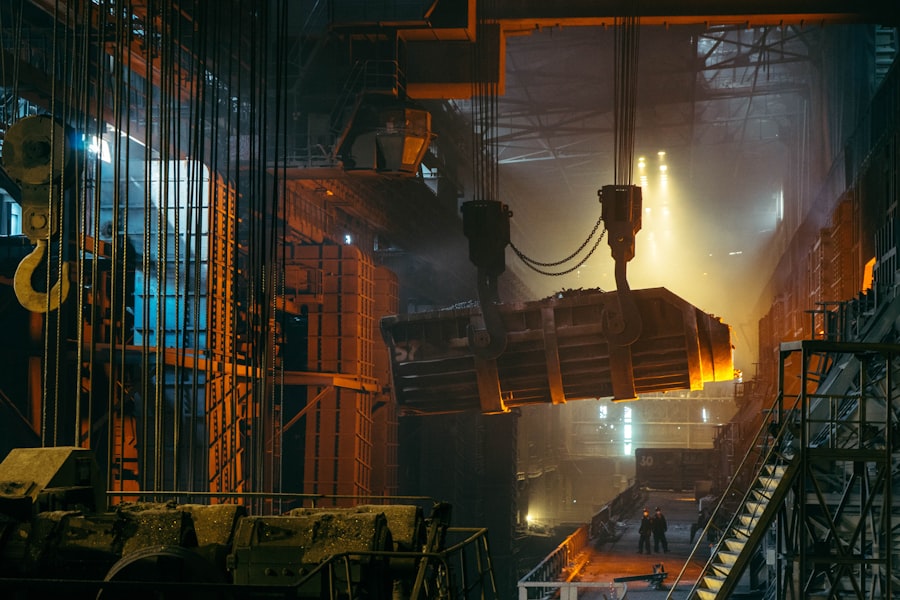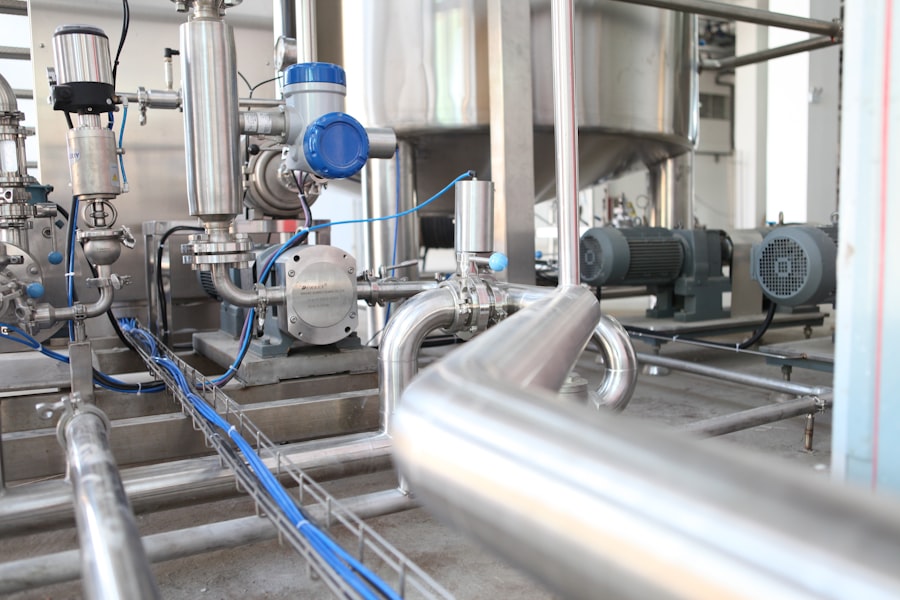In the bustling world of logistics and distribution, the significance of maintaining clean warehouses cannot be overstated. A clean warehouse is not merely a matter of aesthetics; it plays a crucial role in ensuring operational efficiency and safety. When the floors are free from debris, spills, and dust, the risk of accidents diminishes significantly.
Employees can navigate the space with ease, reducing the likelihood of slips and falls, which can lead to costly injuries and insurance claims. Moreover, a tidy environment fosters a sense of professionalism and pride among staff, enhancing morale and productivity. Beyond safety, cleanliness in warehouses also impacts inventory management.
Dust and grime can accumulate on products, leading to potential damage or contamination, particularly in industries dealing with food or pharmaceuticals. A clean warehouse ensures that goods are stored in optimal conditions, preserving their quality and extending their shelf life. Furthermore, regular cleaning routines can help identify maintenance issues before they escalate into more significant problems, ultimately saving time and resources.
Thus, investing in cleanliness is not just about appearance; it is a strategic move that can enhance overall business performance.
Summary
- Clean warehouses are essential for maintaining a safe and efficient working environment
- Floor scrubbers have evolved to become more efficient and environmentally friendly
- Using floor scrubbers for warehouse cleaning saves time, water, and energy
- There are different types of floor scrubbers available, including walk-behind and ride-on models
- Consider factors such as floor type and size when choosing the right floor scrubber for your warehouse
The Evolution of Floor Scrubbers
The Limitations of Manual Scrubbing
This labour-intensive method was not only time-consuming but also physically demanding, leading to fatigue and decreased productivity. As industries grew and the demand for efficiency increased, the need for more effective cleaning solutions became apparent.
The Advent of Mechanical Floor Scrubbers
The introduction of mechanical floor scrubbers marked a significant turning point in warehouse cleaning. These machines revolutionised the way floors were maintained, allowing for quicker and more thorough cleaning processes.
Advancements in Floor Scrubber Technology
Over the decades, floor scrubbers have evolved from simple ride-on models to sophisticated machines equipped with advanced technology. Today’s scrubbers come with features such as automatic sensors, programmable settings, and eco-friendly cleaning solutions that cater to various surfaces and cleaning needs. This evolution reflects a broader trend towards automation and efficiency in the workplace, highlighting how technology continues to shape our approach to cleanliness.
Advantages of Using Floor Scrubbers for Warehouse Cleaning

Utilising floor scrubbers in warehouse cleaning offers a plethora of advantages that extend beyond mere convenience. One of the most significant benefits is the time saved during cleaning operations. Traditional methods can take hours to achieve satisfactory results, whereas modern floor scrubbers can complete the same task in a fraction of the time.
This efficiency allows warehouse staff to focus on their core responsibilities rather than spending excessive time on cleaning duties. Moreover, floor scrubbers provide a level of cleanliness that manual methods simply cannot match. These machines are designed to reach into crevices and corners that are often overlooked during manual cleaning.
The result is a consistently clean surface that not only looks better but also contributes to a healthier working environment. Additionally, many floor scrubbers are equipped with advanced filtration systems that capture dust and allergens, improving air quality within the warehouse. This is particularly beneficial for employees who may suffer from respiratory issues or allergies, creating a more comfortable workplace for everyone.
Types of Floor Scrubbers Available for Warehouse Cleaning
| Types of Floor Scrubbers | Description |
|---|---|
| Walk-Behind Floor Scrubber | Maneuverable and ideal for small to medium-sized warehouses |
| Ride-On Floor Scrubber | Efficient for large warehouses and reduces operator fatigue |
| Cylindrical Floor Scrubber | Suitable for uneven surfaces and can sweep and scrub simultaneously |
| Disc Floor Scrubber | Great for smooth surfaces and offers high cleaning performance |
When it comes to selecting a floor scrubber for warehouse cleaning, it is essential to understand the various types available on the market. Each type serves different purposes and is suited to specific cleaning needs. One common type is the walk-behind scrubber, which is ideal for smaller spaces or areas with intricate layouts.
These machines are manoeuvrable and allow operators to navigate tight corners with ease while providing effective cleaning power. On the other hand, ride-on scrubbers are designed for larger warehouses where efficiency is paramount. These machines allow operators to sit while cleaning, significantly reducing fatigue during extended use.
They are equipped with larger tanks and more powerful motors, enabling them to cover vast areas quickly. Additionally, there are also robotic floor scrubbers emerging in the market, which represent the cutting edge of cleaning technology. These autonomous machines can navigate through warehouses independently, using sensors to avoid obstacles while ensuring thorough cleaning without human intervention.
How to Choose the Right Floor Scrubber for Your Warehouse
Selecting the right floor scrubber for your warehouse requires careful consideration of several factors. First and foremost, it is crucial to assess the size and layout of your facility. A smaller warehouse may benefit from a walk-behind model that offers agility and precision, while larger spaces may necessitate a ride-on scrubber for maximum efficiency.
Understanding the specific cleaning requirements of your warehouse is essential; for instance, if your facility handles food products, you may need a scrubber that utilises sanitising solutions. Another critical aspect to consider is the type of flooring in your warehouse. Different surfaces require different cleaning approaches; for example, polished concrete may need a gentler touch compared to rougher surfaces like unsealed concrete or tile.
Additionally, evaluating your budget is vital; while investing in high-quality equipment may seem daunting initially, it often pays off in terms of durability and performance over time. By taking these factors into account, you can make an informed decision that aligns with your warehouse’s unique needs.
Best Practices for Using Floor Scrubbers in Warehouse Cleaning

Proper Training for Optimal Results
One fundamental practice is to ensure that operators are adequately trained in using the equipment. Understanding how to operate the machine correctly not only enhances cleaning efficiency but also prolongs the lifespan of the equipment. Regular training sessions can help staff stay updated on new features or techniques that improve performance.
Customised Cleaning Schedules
Another best practice involves establishing a regular cleaning schedule tailored to your warehouse’s specific needs. High-traffic areas may require more frequent cleaning compared to less frequented sections. By creating a routine that incorporates daily maintenance tasks alongside deeper weekly or monthly cleans, you can ensure that your warehouse remains in optimal condition at all times.
Regular Maintenance and Monitoring
Additionally, it’s important to monitor the performance of your floor scrubber regularly; checking for wear and tear or any malfunctions can prevent larger issues down the line.
Maintenance and Care of Floor Scrubbers
Proper maintenance and care of floor scrubbers are paramount to ensuring their longevity and effectiveness in warehouse cleaning operations. Regularly inspecting the machine for any signs of wear or damage is essential; this includes checking brushes, pads, and squeegees for wear and replacing them as necessary. Neglecting these components can lead to subpar cleaning results and may even cause further damage to the machine itself.
Furthermore, keeping the scrubber clean after each use is crucial. Residue from cleaning solutions can build up over time if not properly rinsed away, potentially affecting performance during subsequent uses. It’s advisable to follow manufacturer guidelines regarding maintenance schedules and procedures; many modern machines come equipped with diagnostic tools that alert operators when maintenance is due or if any issues arise.
By prioritising care and maintenance, you can ensure that your floor scrubber remains a reliable asset in your warehouse cleaning arsenal.
Future Trends in Warehouse Cleaning Technology
As we look towards the future, it’s clear that technology will continue to play an integral role in shaping warehouse cleaning practices. One emerging trend is the increasing integration of artificial intelligence (AI) into floor scrubbers. AI-powered machines can learn from their environment, adapting their cleaning patterns based on traffic flow and specific areas that require more attention.
This level of sophistication not only enhances efficiency but also allows for more tailored cleaning solutions. Additionally, sustainability is becoming a focal point in warehouse operations, including cleaning practices. The development of eco-friendly cleaning solutions and energy-efficient machines reflects a growing awareness of environmental impact within the industry.
Future floor scrubbers may incorporate advanced water recycling systems or utilise biodegradable detergents that minimise ecological footprints while maintaining high standards of cleanliness. In conclusion, as warehouses evolve into more complex environments driven by technology and efficiency demands, so too will the tools we use to maintain them. Embracing these trends will not only enhance operational effectiveness but also contribute to creating safer and healthier workplaces for all employees involved in this vital sector.
FAQs
What are warehouse floor scrubbers?
Warehouse floor scrubbers are industrial cleaning machines designed to efficiently clean and maintain large floor areas in warehouses, distribution centres, and other industrial facilities. They are specifically designed to remove dirt, grime, and other debris from the floor surface.
How do warehouse floor scrubbers work?
Warehouse floor scrubbers work by using a combination of water, cleaning solution, and scrubbing brushes or pads to agitate and lift dirt and grime from the floor surface. The machine then uses suction to remove the dirty water and debris, leaving the floor clean and dry.
What are the benefits of using warehouse floor scrubbers?
Using warehouse floor scrubbers offers several benefits, including increased efficiency in cleaning large floor areas, improved cleanliness and hygiene, reduced labour costs, and enhanced safety by removing slippery and hazardous substances from the floor surface.
What types of warehouse floor scrubbers are available?
There are various types of warehouse floor scrubbers available, including walk-behind scrubbers, ride-on scrubbers, and robotic scrubbers. Each type is designed to suit different facility sizes and cleaning requirements.
How to choose the right warehouse floor scrubber for a facility?
When choosing a warehouse floor scrubber, factors to consider include the size of the facility, the type of flooring, the frequency of cleaning, and the specific cleaning needs. It’s important to select a machine that can effectively and efficiently clean the entire floor area.
What maintenance is required for warehouse floor scrubbers?
Regular maintenance of warehouse floor scrubbers is essential to ensure optimal performance. This includes cleaning the machine after each use, checking and replacing scrubbing pads or brushes as needed, and performing routine inspections and servicing as recommended by the manufacturer.

